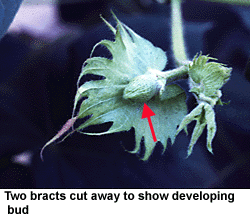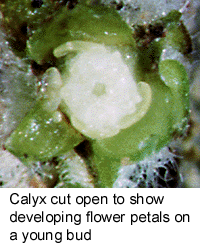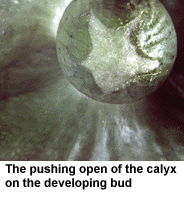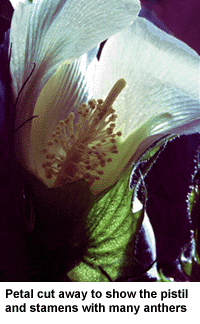|
|
|
|

|


|
|
The developing flower consists of concentric whorls, the outer one being the bracts. Inside the bracts is a whorl of sepals (collectively, called the calyx, which are green and completely enclose the inner developing whorls . The next whorl consists of the petals (collectively, called the corolla). The next whorl is composed of stamens, the structures responsible for producing pollen. The white mass in the center of this bud is most likely immature stamens. The gynoecium (not visible here), or female reproductive structure, develops within the whorl of stamens. |

|
As the square develops, the calyx is pushed open, and petals can be seen. |
|
|
|

|
After 35 to 45 days, the flower opens for a period of one day. The flower either self pollinated, or sometimes (although rarely) is cross pollinated by insects. After the ovules are fertilized, the bolls require 40-70 more days to fully mature. The length of time to maturity depends upon the species of cotton. |
|
To read about floral anatomy... |
|
Introduction | Flowers&Fruit | Roots | Stems | Leaves Section of Plant Biology Division of Biological Sciences UNIVERSITY OF CALIFORNIA, DAVIS |